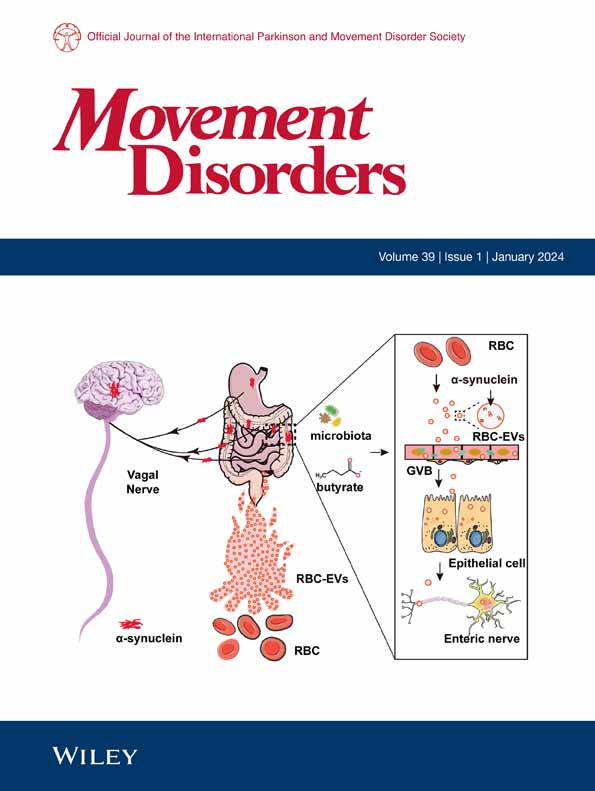Nicola M Slater, Tracy R Melzer, Daniel J Myall, Tim J Anderson, John C Dalrymple-Alford
求助PDF
{"title":"帕金森病的前脑基底胆碱能完整性与认知:磁共振成像证据的再评估》。","authors":"Nicola M Slater, Tracy R Melzer, Daniel J Myall, Tim J Anderson, John C Dalrymple-Alford","doi":"10.1002/mds.30023","DOIUrl":null,"url":null,"abstract":"<p><p>Cognitive impairment is a well-recognized and debilitating symptom of Parkinson's disease (PD). Degradation in the cortical cholinergic system is thought to be a key contributor. Both postmortem and in vivo cholinergic positron emission tomography (PET) studies have provided valuable evidence of cholinergic system changes in PD, which are pronounced in PD dementia (PDD). A growing body of literature has employed magnetic resonance imaging (MRI), a noninvasive, more cost-effective alternative to PET, to examine cholinergic system structural changes in PD. This review provides a comprehensive discussion of the methodologies and findings of studies that have focused on the relationship between cholinergic basal forebrain (cBF) integrity, based on T1- and diffusion-weighted MRI, and cognitive function in PD. Nucleus basalis of Meynert (Ch4) volume has been consistently reduced in cognitively impaired PD samples and has shown potential utility as a prognostic indicator for future cognitive decline. However, the extent of structural changes in Ch4, especially in early stages of cognitive decline in PD, remains unclear. In addition, evidence for structural change in anterior cBF regions in PD has not been well established. This review underscores the importance of continued cross-sectional and longitudinal research to elucidate the role of cholinergic dysfunction in the cognitive manifestations of PD. © 2024 The Author(s). Movement Disorders published by Wiley Periodicals LLC on behalf of International Parkinson and Movement Disorder Society.</p>","PeriodicalId":213,"journal":{"name":"Movement Disorders","volume":" ","pages":""},"PeriodicalIF":7.4000,"publicationDate":"2024-10-03","publicationTypes":"Journal Article","fieldsOfStudy":null,"isOpenAccess":false,"openAccessPdf":"","citationCount":"0","resultStr":"{\"title\":\"Cholinergic Basal Forebrain Integrity and Cognition in Parkinson's Disease: A Reappraisal of Magnetic Resonance Imaging Evidence.\",\"authors\":\"Nicola M Slater, Tracy R Melzer, Daniel J Myall, Tim J Anderson, John C Dalrymple-Alford\",\"doi\":\"10.1002/mds.30023\",\"DOIUrl\":null,\"url\":null,\"abstract\":\"<p><p>Cognitive impairment is a well-recognized and debilitating symptom of Parkinson's disease (PD). Degradation in the cortical cholinergic system is thought to be a key contributor. Both postmortem and in vivo cholinergic positron emission tomography (PET) studies have provided valuable evidence of cholinergic system changes in PD, which are pronounced in PD dementia (PDD). A growing body of literature has employed magnetic resonance imaging (MRI), a noninvasive, more cost-effective alternative to PET, to examine cholinergic system structural changes in PD. This review provides a comprehensive discussion of the methodologies and findings of studies that have focused on the relationship between cholinergic basal forebrain (cBF) integrity, based on T1- and diffusion-weighted MRI, and cognitive function in PD. Nucleus basalis of Meynert (Ch4) volume has been consistently reduced in cognitively impaired PD samples and has shown potential utility as a prognostic indicator for future cognitive decline. However, the extent of structural changes in Ch4, especially in early stages of cognitive decline in PD, remains unclear. In addition, evidence for structural change in anterior cBF regions in PD has not been well established. This review underscores the importance of continued cross-sectional and longitudinal research to elucidate the role of cholinergic dysfunction in the cognitive manifestations of PD. © 2024 The Author(s). Movement Disorders published by Wiley Periodicals LLC on behalf of International Parkinson and Movement Disorder Society.</p>\",\"PeriodicalId\":213,\"journal\":{\"name\":\"Movement Disorders\",\"volume\":\" \",\"pages\":\"\"},\"PeriodicalIF\":7.4000,\"publicationDate\":\"2024-10-03\",\"publicationTypes\":\"Journal Article\",\"fieldsOfStudy\":null,\"isOpenAccess\":false,\"openAccessPdf\":\"\",\"citationCount\":\"0\",\"resultStr\":null,\"platform\":\"Semanticscholar\",\"paperid\":null,\"PeriodicalName\":\"Movement Disorders\",\"FirstCategoryId\":\"3\",\"ListUrlMain\":\"https://doi.org/10.1002/mds.30023\",\"RegionNum\":1,\"RegionCategory\":\"医学\",\"ArticlePicture\":[],\"TitleCN\":null,\"AbstractTextCN\":null,\"PMCID\":null,\"EPubDate\":\"\",\"PubModel\":\"\",\"JCR\":\"Q1\",\"JCRName\":\"CLINICAL NEUROLOGY\",\"Score\":null,\"Total\":0}","platform":"Semanticscholar","paperid":null,"PeriodicalName":"Movement Disorders","FirstCategoryId":"3","ListUrlMain":"https://doi.org/10.1002/mds.30023","RegionNum":1,"RegionCategory":"医学","ArticlePicture":[],"TitleCN":null,"AbstractTextCN":null,"PMCID":null,"EPubDate":"","PubModel":"","JCR":"Q1","JCRName":"CLINICAL NEUROLOGY","Score":null,"Total":0}
引用次数: 0
引用
批量引用

 求助内容:
求助内容: 应助结果提醒方式:
应助结果提醒方式:


